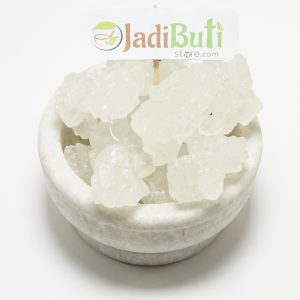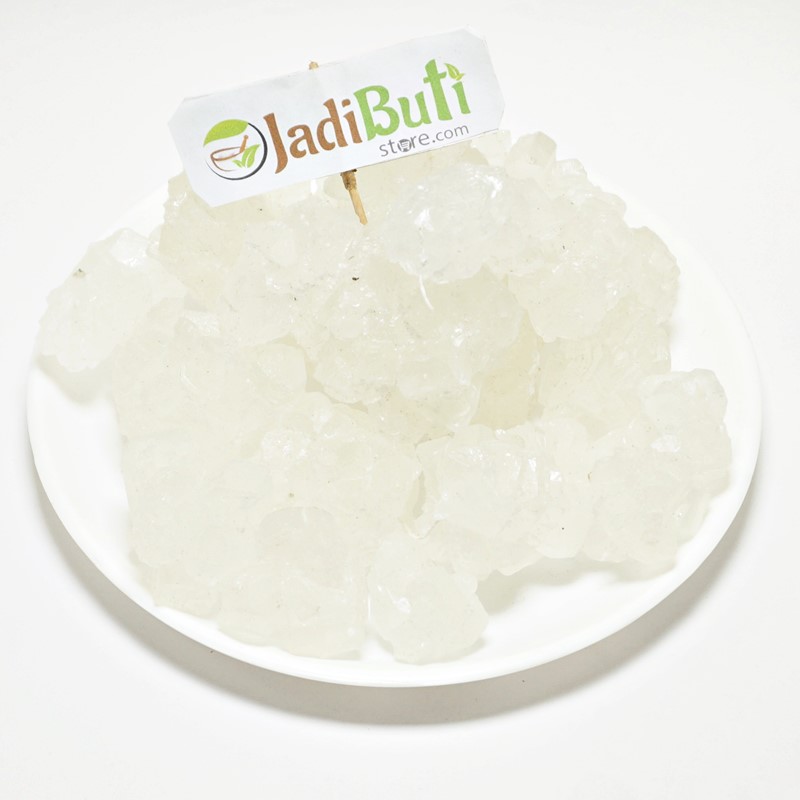R
Showing all 12 results
-
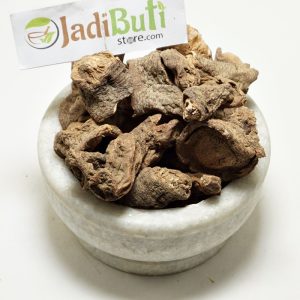
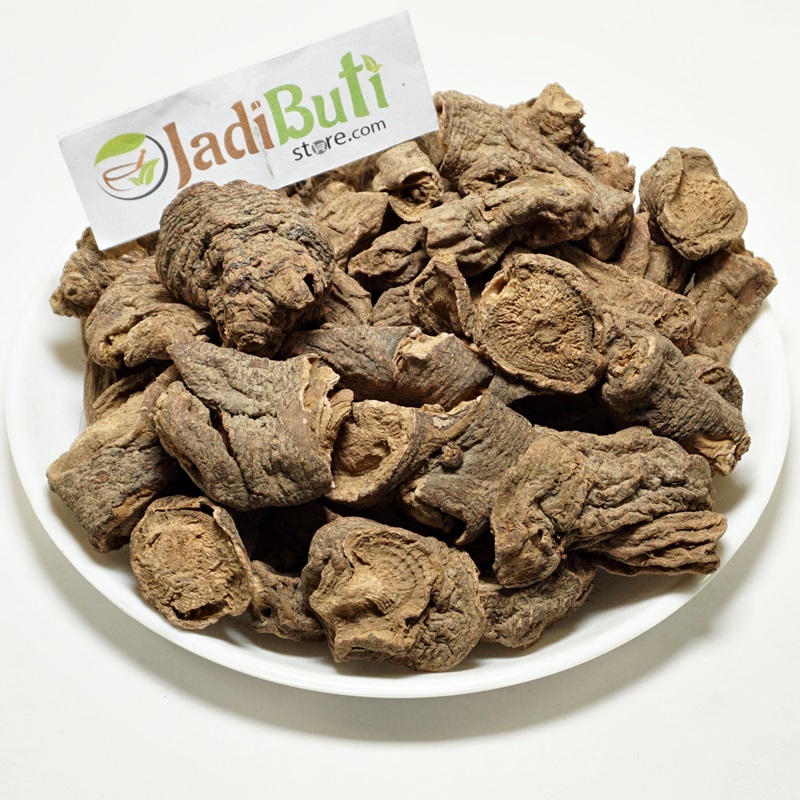
Behman Lal – बहमन लाल – Red Sage – Salvia haematodes Linn
₹110.00 – ₹765.00Quick ViewBehman Lal – बहमन लाल – Red Sage – Salvia haematodes Linn.
Behman Lal Name in different languages:
Behman Lal English Name : Red Sage, Garden Sage, Dalmation Sage, Common Sage
Behman Lal Hindi Name : Lal Bahaman बहमन लाल
Behman Lal Latin name : Salvia haematodes Linn.
Behman Lal Urdu Name : Behman Surkh
Behman Lal Arabic Name : Naa’ima, Saalbiya, Saalfiyaa, Bahman Abyad
Behman Lal Bengali Name : Lal Behman
Behman Lal Chinese Name : Dan shen
Behman Lal French Name : Sauge Rouge
Behman Lal German Name : Wiesensalbei
Behman Lal Persian Name : Behman Surkh
-
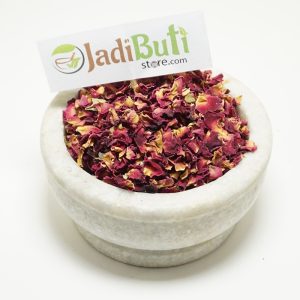

Gulab Petal(patti) – गुलाब पत्ती – Dry Rose Petal – Rosa Gallica
₹260.00 – ₹2,170.00Quick ViewAyurvedic Classification Description Rasa (taste) Sweet, astringent, and bitter Guna (qualities) Light, dry, and cool Virya (potency) Cooling Vipaka (post-digestive effect) Sweet Dosha effect Balances Pitta and Vata doshas Karma (actions) Cooling, anti-inflammatory, anti-oxidant, rejuvenative, and mild laxative Dhatu (tissue) affinity Works primarily on the blood, skin, and reproductive tissues Srotas (channel) affinity Works primarily on the digestive, circulatory, and reproductive channels Prabhava (special effect) Promotes a calm and soothing effect on the mind and emotions .
Active Compound Benefits Flavonoids (e.g. kaempferol, quercetin) Anti-inflammatory, antioxidant, and anti-cancer properties Tannins Astringent and anti-inflammatory properties Anthocyanins (e.g. cyanidin, pelargonidin) Anti-inflammatory, antioxidant, and anti-cancer properties Carotenoids (e.g. beta-carotene) Anti-inflammatory and antioxidant properties Vitamins (e.g. vitamin C) Antioxidant and immune-boosting properties Essential oils (e.g. geraniol, citronellol) Anti-inflammatory, antimicrobial, and anti-anxiety properties Beta-sitosterol Anti-inflammatory, anti-cancer, and cholesterol-lowering properties Gallic acid Antioxidant and anti-inflammatory properties -
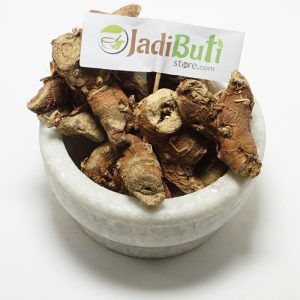
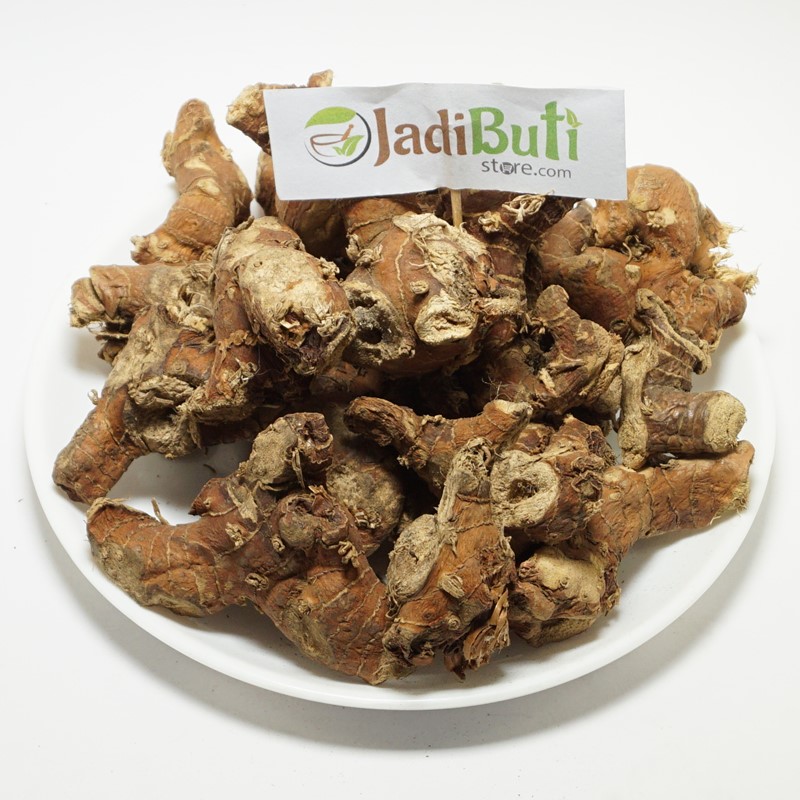
Kulanjan Root – कुलंजन – Colic Root – Alpinia Galanga
₹140.00 – ₹1,160.00Quick ViewKulanjan Root | Other Names: Galangal Root, Greater Galangal, Siamese Ginger
Scientific Name: Alpinia galanga
Property Ayurvedic Name Rasa (taste) Katu (pungent), Tikta (bitter) Guna (quality) Laghu (light), Ruksha (dry) Virya (potency) Ushna (hot) Vipaka (post-digestive effect) Katu (pungent) Doshas (effect on humors) Balances Kapha and Vata doshas, may increase Pitta dosha in excess Ayurvedic Uses:
- Digestive health: Stimulates digestion, reduces bloating, gas, and indigestion
- Anti-inflammatory effects: Reduces inflammation and pain, beneficial for arthritis and other inflammatory conditions
- Respiratory health: Improves respiratory health, relieves symptoms of coughs, colds, and bronchitis
- Immune system support: Supports immune system, protects against infections and illnesses
- Skin health: Protects the skin from damage, promotes healthy skin
- Cognitive function: Enhances cognitive function, improves memory
- Menstrual health: Regulates menstrual cycle, reduces menstrual pain and irregularities, relieves symptoms of PMS
- Cardiovascular health: Improves blood circulation, reduces risk of heart disease, lowers cholesterol levels and blood pressure
- Anti-cancer effects: May help protect against certain types of cancer
- Anti-aging effects: Protects against age-related damage, improves skin elasticity, reduces appearance of wrinkles
- Weight loss: Promotes weight loss, increases metabolism, reduces appetite
-
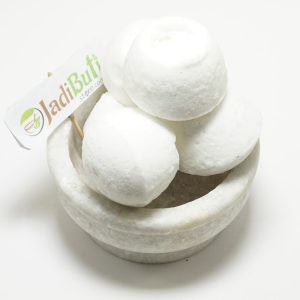
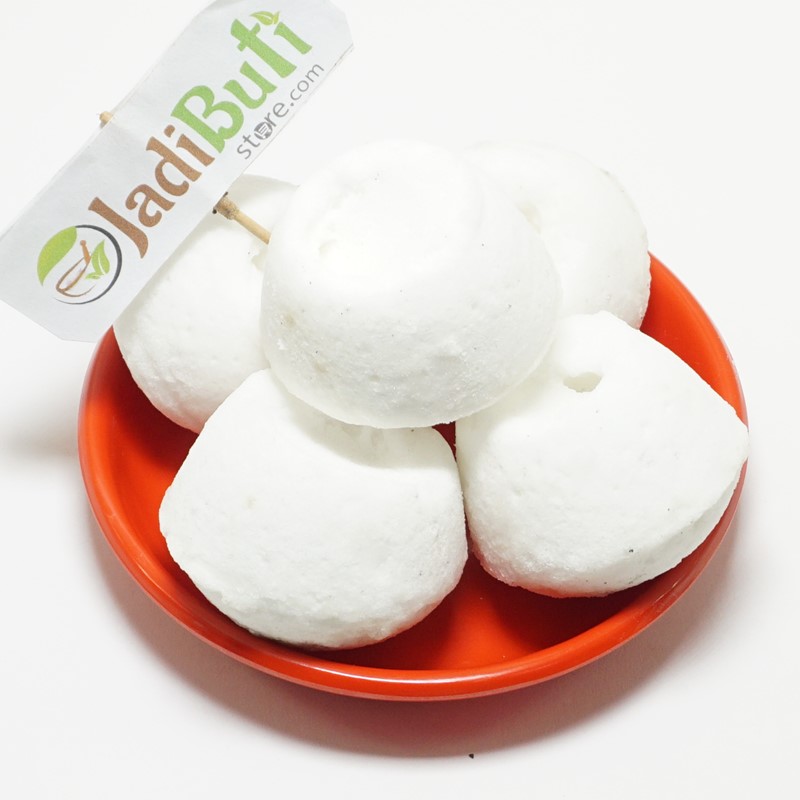
Kunja mishri – कुंजा मिश्री – Mishri balls – Rock candy
₹120.00 – ₹920.00Quick ViewAyurvedic Name Kunja Mishri or Kumbh Shakkar Properties Balances Vata and Pitta doshas, boosts immunity and energy levels, supports respiratory health, promotes healthy digestion and metabolism Nutritional Value Contains calcium, iron, potassium Uses Sweetener in cooking and beverages, used in Ayurvedic medicine for its health benefits Precautions Excessive consumption of any type of sugar can have negative health effects Ayurvedic Benefits :
- Helps to balance Vata and Pitta doshas
- Boosts immunity and energy levels
- Supports respiratory health
- Promotes healthy digestion and metabolism
- Helps to soothe sore throat and cough
-
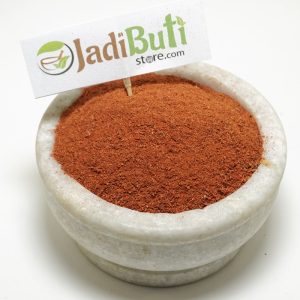
Lal Chandan Powder – लाल चंदन – Red Sandalwood Powder – Pterocarpus santalinus
₹80.00 – ₹845.00Quick ViewRed sandalwood powder has been used for centuries in traditional Ayurvedic medicine as a natural remedy for various health and beauty conditions. Red sandalwood powder has anti-inflammatory, antiseptic, and astringent properties, making it a popular ingredient in skincare, hair care, and medicinal products. It can help to soothe and brighten the skin, reduce acne and dark spots, promote hair growth, and relieve sunburn and inflammatory conditions. Red sandalwood powder is also used in aromatherapy and meditation practices for its calming and grounding effects on the mind. It is often combined with other natural ingredients, such as turmeric, honey, and milk, to create face masks and other skincare products. Red sandalwood powder is considered safe and gentle for most skin types.
-


Majith – Manjistha – Indian Madder – Rubia cordifolia
₹140.00 – ₹1,170.00Quick ViewManjistha is classified as a bitter, astringent, sweet, and cooling herb. It is believed to have a balancing effect on the Pitta and Kapha doshas, while increasing Vata dosha.
.
Ayurvedic classification of Manjistha (Rubia cordifolia):
Ayurvedic Classification Description Rasa (taste) Astringent, bitter, and sweet Guna (qualities) Heavy, dry, and cold Virya (potency) Cooling Vipaka (post-digestive effect) Sweet Dosha effect Pacifies Pitta and Kapha doshas Karma (actions) Blood purifier, detoxifying, diuretic, anti-inflammatory, and antioxidant Dhatu (tissue) affinity Works primarily on the blood and lymphatic tissues Srotas (channel) affinity Works primarily on the circulatory and lymphatic channels Prabhava (special effect) Purifies and cools the blood, supports healthy skin, and promotes overall detoxification Active compounds and their benefits found in manjistha (Rubia cordifolia):
Active Compound Benefits Anthraquinones (alizarin, purpurin, and munjistin) Anti-inflammatory, antioxidant, and antimicrobial properties Tannins Anti-inflammatory, antioxidant, and wound-healing properties Flavonoids (quercetin, kaempferol, and rutin) Anti-inflammatory, antioxidant, and anti-cancer properties Xanthones Anti-inflammatory, antioxidant, and anti-cancer properties Glycosides Cardio-protective, hepatoprotective, and immune-boosting properties Betaine Liver-protective and anti-inflammatory properties -


Mastagi Rumi – मस्तगी रूमी – Mastic Gum – Pistacia lentiscus
₹950.00 – ₹26,785.00Quick ViewOur mastic gum is carefully harvested and processed to ensure maximum purity and potency, providing you with a natural and effective way to support your overall health and wellbeing.
Our mastic gum is rich in antioxidants and has been shown to have powerful anti-inflammatory and antimicrobial properties. It may help to promote digestive health, support oral health, and improve respiratory function. Our mastic gum is also known for its potential cholesterol-lowering effects and blood sugar regulating properties, making it a great supplement for those looking to maintain healthy cholesterol and blood sugar levels.Our mastic gum is 100% natural and free from any synthetic additives, making it a safe and healthy supplement for daily use. mastic gum is gluten-free, non-GMO, and suitable for vegans and vegetarians.
-
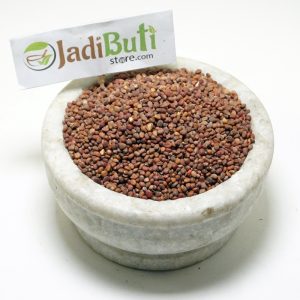
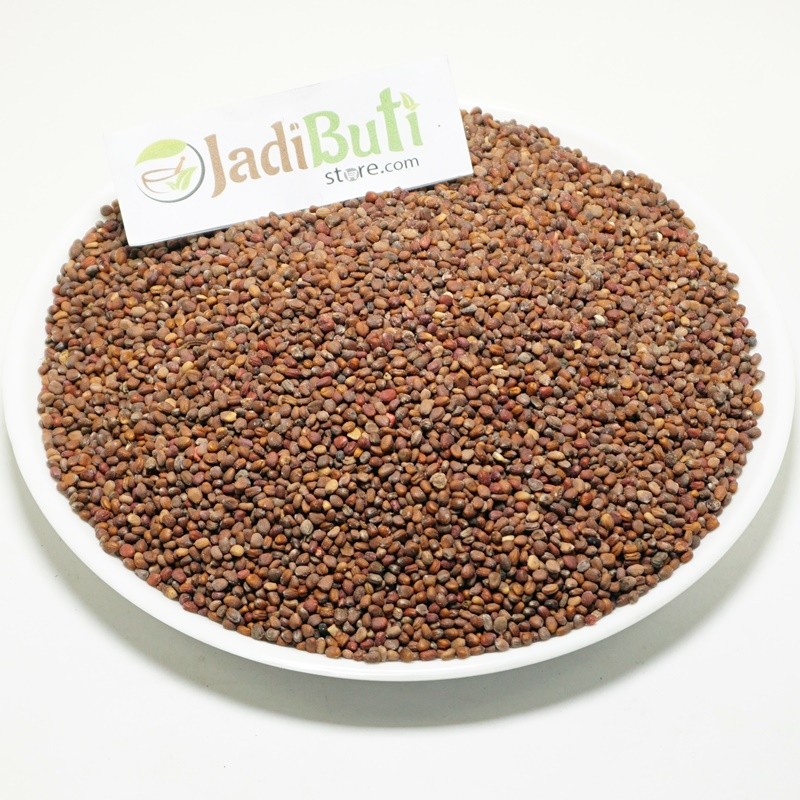
Muli Beej (edible) – मूली बीज – Radish Seed – Raphanus sativus
₹110.00 – ₹845.00Quick ViewMuli Beej (edible) – मूली बीज – Radish Seed – Raphanus sativus.
Name In Different Languages:
Muli Beej In English Name : Radish
Muli Beej In Hindi Name : Muli, Mooli
Muli Beej In Latin name : Raphanus sativus Linn.
Muli Beej In Urdu Name : Muli
Muli Beej In Arabic Name : Fujal
Muli Beej In Bengali Name : Mula
Muli Beej In French Name : Radis cultivé
Muli Beej In German Name : Garten-Rettich, Rettich
Muli Beej In Gujarati Name : Mulo, Mula
Muli Beej In Kannada Name : Moolangi, Moclangi gadde, Mullangi, Mugunigadde
Muli Beej In Marathi Name : Mula
Muli Beej In Persian Name : Turb, Turbuzah
Muli Beej In Punjabi Name : Mula, Mulaka, Muli
Muli Beej In Sanskrit Name : Moolaka, Mulaka
Introduction:
Radish is grown all over India. Radish is also grown in the form of carrot inside the ground in Kandrup. The main part of radish is two varieties – white and small white red. Its rounds are also other varieties. Radish is considered to be eaten in October-November. Radish is eaten raw. Greens of radish and radish leaves are also made. Mixing gram flour in radish leaves also makes delicious stirring. Oil from radish seeds emerges. Radish oil is heavy and colorless in weight. Eating raw radish in the middle of the food increases interest in eating. Sprinkle a little salt by spinning radish into radish pieces and eat it in the morning.
-

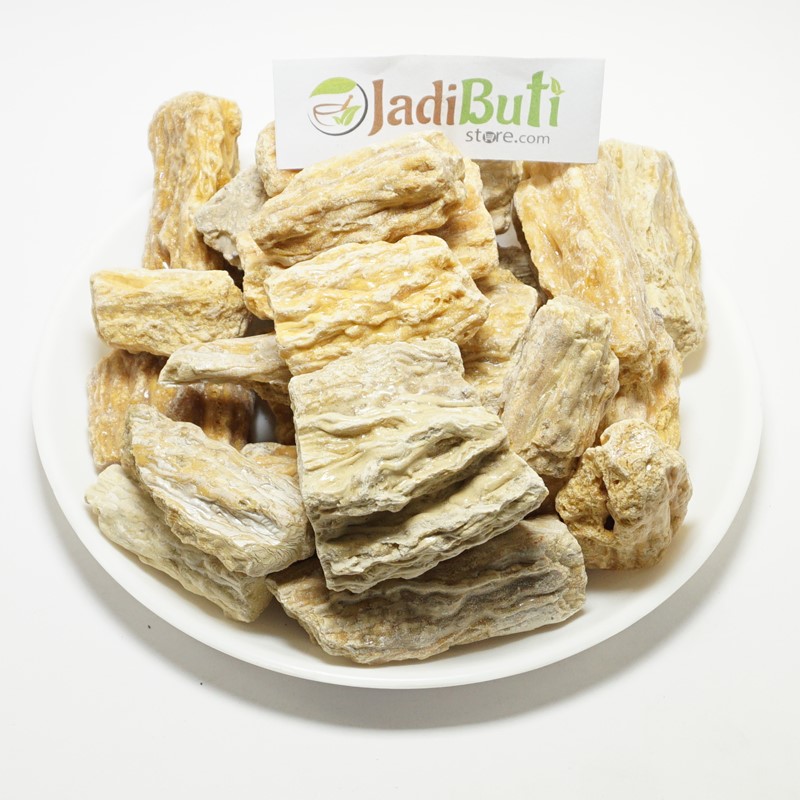
Raal – राल – Sal Tree – Shorea Robusta
₹170.00 – ₹1,150.00Quick ViewRaal – राल – Sal Tree – Shorea Robusta.
Raal Name In Different Languages:
Raal in English name – Resin, Rosin, Sal Tree
Raal in Hindi name – Raal
Raal in Latin name – Shorea Robusta
Raal in Punjabi : Shala,
Raal in Bengali : Shaalgaach,
Raal in Gujrati : Shaalvriksh,
Raal in Kannada : Kabba, Saal,
Raal in Malayalam : Saalvriksham, Mulappumarutu,
Raal in Marrathi : Shaalvriksh, Raalchaavriksha,
Raal in Oriya : Salva, Shaaluaagachha,
Raal in Tamil : Saalam,
Raal in Telugu : Guggilam
Quality :
This is a glue of shawl tree. It eliminates the acrid, cold (cold), juice- rich , blood-borne diseases , lethal (leprosy) and burning , fracture and diarrhea (diarrhea) .
Useful in various diseases :
1. Cough:
- Mixing about half grams of 1 gram resin with small peepal, turmeric, honey and ghee, it provides relief in cough diseases by taking it in the morning and evening.
- If the patient is consumed with a fourth part of approximately 1 gram, then the cough (mucus) is easily removed and coughing is also stopped.
2. Prostration Disease: Mixing 4 grams of sugar in 1 gram white resin and eating it with milk in the morning and evening gives benefits in the disease.
-
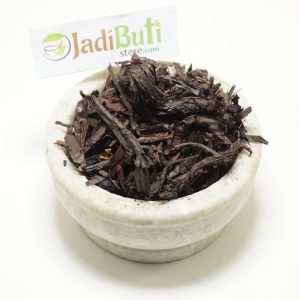

Ratanjot – रतनजोत – Alkanet – Onosma echioides
₹210.00 – ₹1,740.00Quick ViewName: Ratanjot (Alkanet root or Alkanna tinctoria)
Uses: Ratanjot is a medicinal herb commonly used in Ayurvedic medicine. It is believed to have anti-inflammatory, analgesic, antimicrobial, and hepatoprotective properties. Ratanjot has been traditionally used to treat various conditions, including skin inflammation, digestive disorders, respiratory conditions, and wound healing. It may also help support cardiovascular health and have anti-cancer and anti-aging properties.
Precautions: Ratanjot should always be used under the guidance of a qualified Ayurvedic practitioner, as it can interact with certain medications and may not be safe for everyone to use. Pregnant and breastfeeding women should avoid using Ratanjot. Additionally, it may cause allergic reactions in some people.
Forms: Ratanjot is available in various forms, including dried roots, powder, capsules, and oil.
Scientific evidence: While Ratanjot has been used for medicinal purposes for centuries, more research is needed to fully understand its effects on human health. However, some studies have shown that Ratanjot contains compounds that have anti-inflammatory, antioxidant, and anti-cancer properties.
-

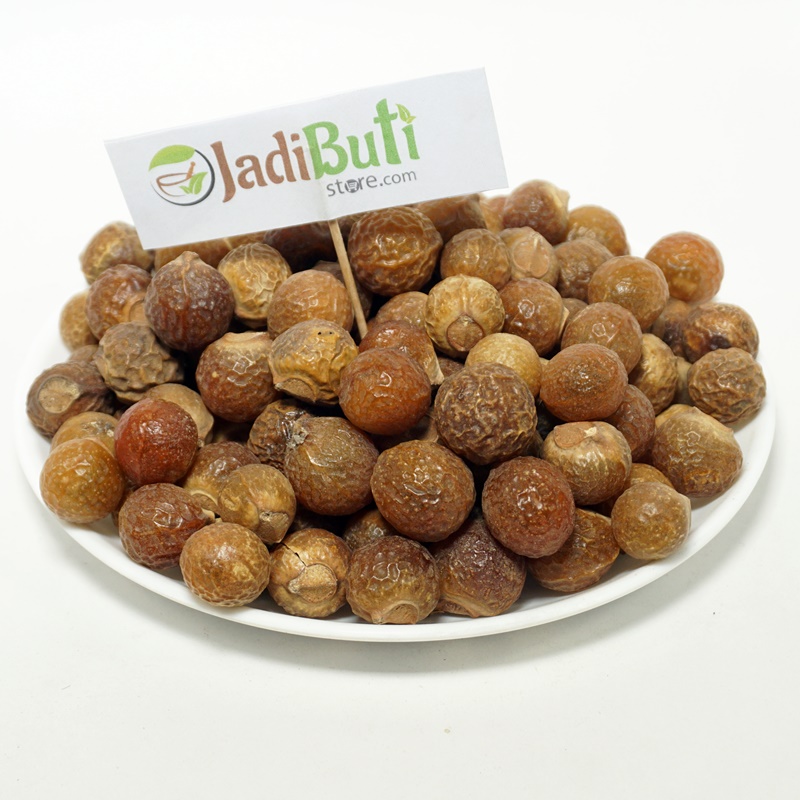
Reetha – Ritha – Soap Nut – Indian soapberry
₹80.00 – ₹625.00Quick ViewReetha | Indian Soapberry
Ayurvedic classification of Indian Soapberry (Sapindus Mukorossi):
Ayurvedic Classification Description Rasa (taste) Astringent, bitter, and sweet Guna (qualities) Light, dry, and sharp Virya (potency) Cooling Vipaka (post-digestive effect) Sweet Dosha effect Pacifies Pitta and Kapha doshas Karma (actions) Cleansing, purifying, detoxifying, anti-inflammatory, antifungal, and insecticidal Dhatu (tissue) affinity Works primarily on the skin and blood tissues Srotas (channel) affinity Works primarily on the digestive, respiratory, and urinary channels Prabhava (special effect) Natural surfactant, making it useful as a soap or cleanser Active compounds and their benefits found in Indian Soapberry (Sapindus Mukorossi):
Active Compound Benefits Saponins Natural surfactants that provide cleaning and foaming properties in soap and shampoo products Sapindoside A/B Anti-inflammatory and anti-cancer properties Quercetin Antioxidant and anti-inflammatory properties Kaempferol Anti-inflammatory and anti-cancer properties Gallic acid Antioxidant and anti-inflammatory properties Triterpenoids Antioxidant and anti-inflammatory properties Flavonoids Anti-inflammatory, antimicrobial, and anti-cancer properties

